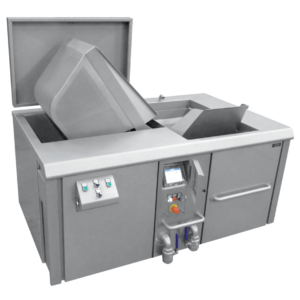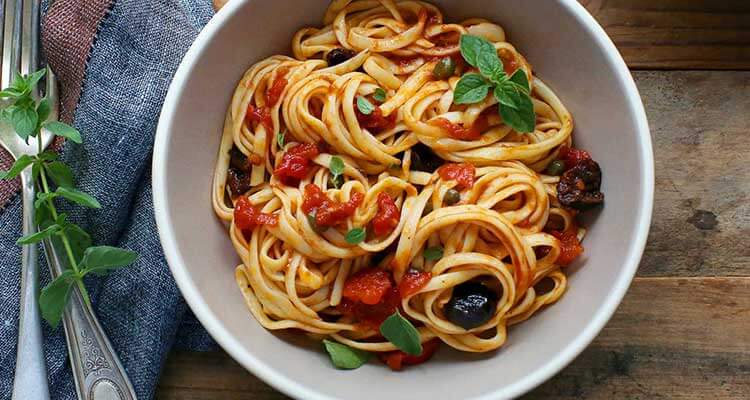How to cook pasta properly?
You don’t know how to cook pasta properly… Here are some tips to be the next Pasta Queen/King!
There’s just something about a well-made pasta dish that makes the mouth water just thinking about it! Pasta remains a favourite staple across so many nationalities. The number of variations is enormous, with 350 types out there. Some common examples are spaghetti, fettucine, penne, linguine, tagliatelle, fusilli, cannelloni, tortellini, vermicelli, rigatoni, ravioli, lasagne, and angel hair pasta.
Most of us enjoy pasta recipes as part of our meal repertoire; however, we are likely making many basic mistakes of which we are unaware. Knowing some crucial fixes will have us cooking like a pro chef! Let’s delve into some common issues that home cooks face which negatively affect their pasta dishes.
Follow these steps for perfect pasta cooking
Overfilling or underfilling the pot
The pasta to water ratio matters! Use too little water, and your pasta turns out gluey. Use too much water, and your pot takes forever to boil!
The Fix: Use enough water that there will be space for the noodles to boil once they expand.
Adding pasta too Soon
Most people put cold water in a pot, add the pasta, and then wait for it to boil. This is not how to cook pasta properly! Doing that you will increase the required cooking time, and results in a more starchy texture. Pasta should only be added to boiling water, NEVER cold water!
The Fix: Toss in your pasta only once your pot has reached a rolling boil!
Adding oil to water
Many of us add oil to the water to try stop the pasta from sticking together. Never add oil to water, whether you’re working with dry or fresh pasta. The reason behind this? The oil can actually act as a barrier preventing your sauce from adhering properly to the pasta.
The Fix: You won’t need to worry about your pasta sticking together if you’re cooking with enough water, and only adding your pasta to the pot once it’s fully boiling.
Drying instead of draining
Don’t allow a sit and dry off stage after draining. Starches will harden as the pasta cools down, and this cannot be reversed!
The Fix: Drain just enough to remove most excess water, with no sitting and drying off period.
Not salting water
Since this is actually your only time in the meal preparation to season the pasta, don’t spare the salt shaker here! The best method of determining the correct amount of salt required is to taste the water, and adjusting the salt level until it tastes like ocean water.
The Fix: The correct time to add the salt is just before the pot begins to boil.
Not stirring enough!
Most people know to stir the pot, but don’t know how or when. Give your pasta a good stir upon first adding it to the pot, since this is when there’s more chance of sticking together before it releases starches. Stir once in a while during the cooking process as well, to ensure the pasta doesn’t stick to the pot.
The Fix: Stir your pasta within the first couple minutes of cooking, and once in a while during the cooking process as well.
Overcooking or undercooking pasta
As a traditional rule, pasta gets served “al dente”, meaning firm but tender to the bite. Most home cooks are guilty of committing the offence of cooking pasta until it resembles porridge! On the other hand, undercooking results in pasta that is still too hard and firm. Make sure to read the packaging for correct cooking times, this is how you will cook pasta properly.
Overcooking Fix: Some pro chefs suggest reducing the package instruction cooking time by a minute or so. You can also perform a taste test to determine if its al dente.
Undercooking Fix: Taste a piece to see if your pasta has cooked through enough to have reached al dente stage.
Discarding pasta water
Most novice chefs strain and dump their pasta water, but a chance to add flavour to their sauce literally goes down the drain.
The Fix: Save some pasta water to add to the sauce for extra richness and salinity. The starch content of the pasta water also aids the sauce and pasta to achieve an even consistency together.
Adding sauce to pasta, instead of vice versa
Most people are guilty of drenching their noodles in sauce! Also, if you’re depositing the sauce over your pasta, there’s an uneven spreading of the topping. Start boiling your noodles only once your sauce is ready. Then, add the pasta promptly after drainage to your sauce in the saucepan.
The Fix: Chefs advice dressing your pasta like you would a salad. So, after your pasta is cooked, deposit it in your saucepan of sauce and then coat all of the pasta in the sauce.
Delicious Spaghetti Puttanesca Recipe
Ingredients
300g dried spaghetti
120g pitted black olives
1 onion, finely chopped
2 tbsp capers, drained
400g can chopped tomatoes
5 anchovy fillets, finely chopped
2 large garlic cloves, crushed
½ small bunch of parsley, finely chopped
3 tbsp olive oil
½ tsp chilli flakes (optional)
Instructions
STEP 1
Heat up the oil in a non-stick pan using medium-low heat. Add the onion and pinch of salt. Fry for 10 mins or until soft. Put in the garlic and chilli, if using, and cook for another minute.
STEP 2
Stir in the tomatoes, olives, capers, and anchovies. Cook uncovered for 15 mins at a gentle simmer. Season to taste.
STEP 3
Boil a large pot of salted water. Cook the spaghetti, then drain, and toss with the sauce and parsley.
Quality cooking equipment is needed to produce a palatable result. Let’s explore Capic’s impressive industrial cooker/chiller models. Each cook chill machine is built for high-performance, hygiene and easy maintenance.
If you’re in the market for top-tier cooking equipment for your business, then Capic boasts a stately range of industrial cook chill machine units constructed for maximum performance and streamlined maintenance.

Cooker Cooler CR250 by CAPIC
Pasta cooker cooler machine model 500/1000/1500
These models are a dream come true if you want an industrial cooker that handles the high line production of cooking and cooling pasta, as well as rice and seafood dishes. The number of cooling tanks is flexible, since you get to select the amount according to your specific requirements. Each industrial cooker displays state-of-the-art touch screen technology. Operation of the cook quench machine is via electric, steam or gas power. The units come with 250, 500 or 750 liter perforated baskets. Each cooker is constructed from hygienic strong stainless steel materials. They feature electric tilting baskets with hydraulic cylinder or gear motor, and the tanks possess automatic or manual drainage valves.
Main Features
Constructed from robust stainless steel materials
Electric tilting of baskets via hydraulic cylinder or gear motor
Tank with automatic or manual drainage valve options
Touch screen control located either on equipment or wall mounted
Pasta cooker cooler machine model CR-250
The CR-250 cook chill machine is perfect for the small line production of pasta, rice and seafood recipes. This cook quench machine comes equipped with cooking and cooling tanks of 220 liters each, and each tank contains a 100L perforated basket. These baskets can tilt electrically, and there is manual or automatic drainage for the cooling tanks. This pasta cooker also features smart control via touch screen, and a sturdy stainless steel construction. Available in electric, gas or steam heating.
Main Features
Strong, hardy stainless steel construction
Electric tilting of baskets
Manual or automatic drainage valve for cooling tanks
Touch screen controls on equipment or wall mounted
Capic offers the ultimate in top quality industrial equipment which caters for food industry professionals.
Feel free to look us up here : cook chill machine

